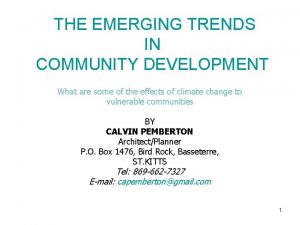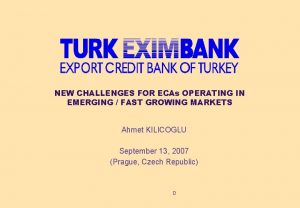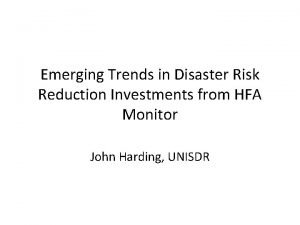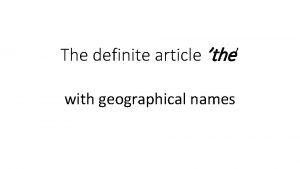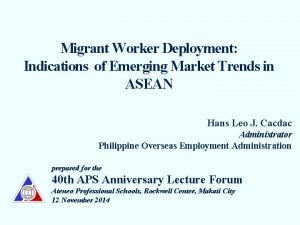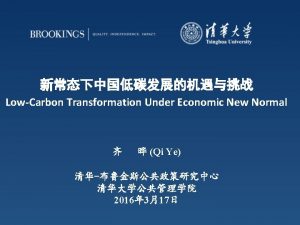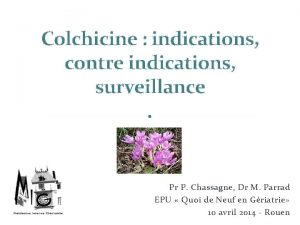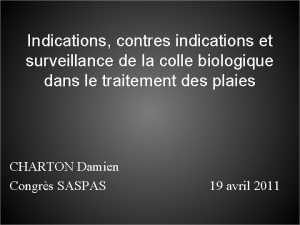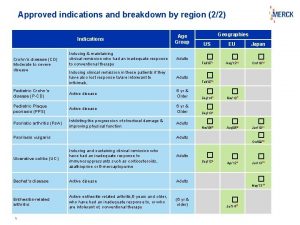Geographical Indications an answer to emerging consumption trends


















- Slides: 18

Geographical Indications: an answer to emerging consumption trends Luis Fernando Samper Federación Nacional de Cafeteros de Colombia June 2005 © Copyright FNC 2005

National Federation of Coffee Growers of Colombia (FNC) • Founded in 1927, by the coffee growers of Colombia, the Federation is the nonprofit, democratic and active advocate of 560, 000 small cafeteros. • With the funds of the National Coffee Fund, the FNC is dedicated to improve the life in the coffee-growing communities and to protect and promote the Colombian Coffee Industry. June 2005 © Copyright FNC 2005

FNC: a democratic organization Through democratic elections, Colombia’s coffee growers choose their representatives to the different instances of the organization. Coffee Congreso Growers’ Nacional de National Congress Cafeteros FNC National ComitéCommittee Nacional Directive ComitéCommittee Ejecutivo Comités Departamentales Regional Committees Comités Local Committees Municipales Caficultores Federados Federated Coffee Growers June 2005 15 353 566. 000 The Coffee Growers’ National Congress elects FNC’s CEO, and authorizes him to represent the interests of Colombian Coffee Growers. © Copyright FNC 2005

Colombian Coffee… • Is exclusively Arabica • Is grown in the Colombian mountains by coffee growers who, through the years, have mastered their traditional manual harvesting and humid processing techniques. • Their careful selection, classification and milling processes, result in a worldknown quality product characterized by its mild and clean cup, pronounced aroma and mid-high acidity and body. June 2005 © Copyright FNC 2005

It is part of the FNC’s strategic objective to maintain and strengthen the differentiation of Colombian Coffee • Due to its unique geographical situation, Colombia enjoys the advantage of having fresh coffee of consistent quality throughout the year, which allows the positioning of 100% Colombian brands. June 2005 © Copyright FNC 2005

• Differentiation generates brand positioning needed to access vertical integration and value added strategies. • A recognized and demanded origin is a tool to penetrate the entry barriers of the market, and create alliances with retailers. June 2005 © Copyright FNC 2005

• Origin differentiation may become the competitive advantage that minimizes Colombia´s exposure to the price war coffee producers have gotten into. Price index for nonpetroleum commodities (1900 -2000) The product portfolio Colombia offers to its consumers, can be provided by roasters under a common umbrella “Café de Colombia” that has unified regulations and quality control requirements. June 2005 © Copyright FNC 2005

Café de Colombia • In December 2004, the FNC presented the Colombian government with an application for the recognition of “Café de Colombia” as a Denomination of Origin. • In February 2005, the Colombian government ratified Café de Colombia as a “D. O. -G. I. ” • In June 2005, “Café de Colombia” became the first product from a non-EU nation to apply for the Protected Denomination of Origin recognition to the EU. June 2005 © Copyright FNC 2005

Why are geographical indications an interesting alternative to pursue? • New generations have greater access and interest for more information about the products they consume. • Globalization has generated a niche of more conscious and demanding consumers. • Origin has become an important differentiation tool. • More diverse product categories: Consumers want more options with different value added proposals. • Trade regulations are shifting towards greater traceability requirements. June 2005 © Copyright FNC 2005

New generations have greater access and interest for more information about the products they consume. • Greater access to global information: internet, specialized publications, etc. • Increased exposure to cultural diversity. X(25 -38 yrs): 33% (U. S. ) are coffee drinkers Y(10 -24 yrs): 23% (U. S. ) are coffee drinkers Mc. Kinsey & Company. Food service 2010: America’s Apetite Matures June 2005 Commercial brands are no longer enough. New consumers are practical and knowledgeable. They seek to make informed decisions about the products they consume. © Copyright FNC 2005

Globalization has generated a niche of more conscious and demanding consumers. New consumption trends: Fresh Innovative/exotic Fair Trade Environment-friendly Traceability June 2005 Organic + information © Copyright FNC 2005

Origin has become an important differentiation tool. Awareness of Colombia as a coffee-growing country KRC Research 2004/2005 June 2005 © Copyright FNC 2005

Café de Colombia as “the best” KRC Research 2004/2005 June 2005 © Copyright FNC 2005

More diverse product categories: Consumers want more options with different value added proposals. i. e. Evolution of the coffee category in the U. S. June 2005 © Copyright FNC 2005

Trade regulations are shifting towards greater traceability requirements for food products. ØTraceability demands the industry to have systems and procedures that guaranty the availability of information about products and suppliers for consumers and regulating authorities. • The Bio-terrorism law in the U. S. demands a traceability system for products destined for human and animal feeding. • In the European case, Ruling 178/02 of the European Commission, requires that, from January 2005, all producing, transforming and distributing companies of food products must have traceability systems. • In Japan, the Ministry of Agriculture has regulated the labeling of food products. The “Law Concerning Standardization and Proper Labeling of Agricultural and Forestry Products” (JAS) requires labels to include information about origin, ingredients and storing methods. June 2005 © Copyright FNC 2005

• Additionally, there are commercial requirements like Euregap, which includes traceability requirements and establishes a global reference for ideal Agricultural practices. A few basic elements found in traceability regulations • Product identification • Product description • Production Lot Number June 2005 • Supplier ID • Harvest date • Shipper’s ID © Copyright FNC 2005

Geographical Indications represent an opportunity for the industry to respond to emerging consumption trends • European Consumers perceive GI’s as: – Origin Guarantee: 37% – Quality Guarantee: 37% – Guarantee of place and method of production: 56% – Tradition: 17% • Geographical Indications represent a potentially attractive commercialization tool for producers around the world: – 43% of European consumers were willing to pay up to an extra 10% for GI products Study developed by the European Comission 1999 – 8% of European consumers were willing to pay up to an extra 20% for GI products – 3% of European consumers were willing to pay up to an extra 30% for GI products June 2005 © Copyright FNC 2005

Geographical Indications: an answer to emerging consumption trends • For consumers and regulators of food products, Geographical Indications are a source of information and credibility. Equally, they are becoming a source of growth and development for producers around the world. • Food safety, health and environmental concerns, are increasingly present in today’s markets. Regulations are shifting towards more demanding systems where traceability guarantees are essential. • Emerging consumer trends have created an ideal environment for GI’s to flourish. Consumers’ demand for more and better information about the products they consume represents an opportunity for systems that guarantee origin and methods of production. June 2005 © Copyright FNC 2005
 Emerging issues in community development
Emerging issues in community development Emerging trends in business intelligence
Emerging trends in business intelligence Emerging trends in software engineering ppt
Emerging trends in software engineering ppt Emerging trends in business intelligence implementation
Emerging trends in business intelligence implementation Current trends in strategic management
Current trends in strategic management Emerging trends in society
Emerging trends in society Challenges of emerging trends in operating systems
Challenges of emerging trends in operating systems Emerging trends in disaster mitigation
Emerging trends in disaster mitigation Recent trends in mis
Recent trends in mis Byzantine empire 1300
Byzantine empire 1300 Family trends meaning
Family trends meaning The geographical position of ukraine
The geographical position of ukraine Geographic isolation examples
Geographic isolation examples Registration process of geographical indication
Registration process of geographical indication Registration of geographical indication
Registration of geographical indication Southeast region physical features
Southeast region physical features The nature of geographic data
The nature of geographic data The with geographical names
The with geographical names Roman architecture geological
Roman architecture geological
